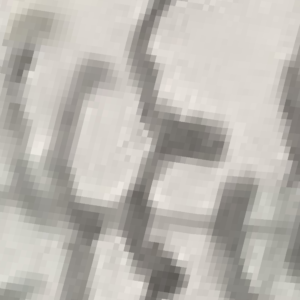It takes a long time to load images in CaveWhere. Why is that?
The short answer is because of DXT1 compression. But first, let’s talk about compression in general. There’s several image compression formats out there. You might be familiar with some of them, such as: JPG, PNG and even newer ones such as webp.
These formats are great at compressing image data on a hard drive. However, when you view them, your computer must decompress the image into raw RGB data. Raw data takes tons of space in RAM! For example, look at the scanned survey data below.

An example of scanned cave notes compressed with JPG.
The graph below compares different image compression formats. The RAW RGB takes a significant amount of space!

DXT1 Compression to the Rescue
Creating cave maps in CaveWhere involves carpeting the survey notes by using scraps. Scraps are small clipped images from the original survey notes. If you’re interested in learning how to create a cave map in CaveWhere with the carpeting process, check out this tutorial.
CaveWhere wraps the scrap images with its carpeting process. For CaveWhere to render the cave, it must upload all scrap images to the graphics card memory. If you have a large cave, all the scraps images could be many, many megabytes or even gigabytes of data! If your computer runs out of graphics memory, the graphics driver must swap between RAM and graphics card memory, greatly reducing CaveWhere’s performance.
By default, CaveWhere uses DXT1 compression to reduce the scrap image memory requirement on the graphics card. DXT1 compression isn’t new. It was first patented in 1997 by S3 Inc. and is widely supported on most graphics cards. DXT1 is a lossy block compression that has a fixed compression ratio of 6:1.
From the previous example, the RAW RGB data would now only take 3.91MB instead 23.44MB of graphics memory. By using DXT1 format, CaveWhere can model six times more cave before running out of graphics card memory.
Downsides of DXT1 Compression
DXT1 compression is lossy. Lossy image compression means that the compression algorithm approximates the original image to save space. As a result, the image loses color accuracy and contains artifacts (see image below). Hopefully, these artifacts are so subtle that it’s hard to tell the difference between the compressed image and the original.

Zoomed in to assent the DXT1 Compression artifacts. Nvidia’s DXT1 GPU compression.

Original RGB image
Compression Speed
Another downside is compression speed. DXT1 compression algorithm takes significant time. This is why CaveWhere is slow to load images, because it’s running the DXT1 compression algorithm. Luckily, CaveWhere supports two implementations of DXT1 compression. The first uses CPU with Squish to do the compression and the other is with the graphics card (GPU). Once compressed, the GPU can decompress the image at lighting speed.
In CaveWhere 0.08 and below, on Windows, CaveWhere only used squish (the CPU compression). Even though it’s multi-threaded, Squish takes 8.4 times slower than the GPU implementation (check out the graph below). On MacOS and Linux, CaveWhere uses GPU DXT1 compression by default.

For a reference, CaveWhere uses “Squish, image threaded, block threaded” and “GPU, image multithread” if your computer supports threaded OpenGL contexts (mainly Windows and Linux with good graphics cards). This is an unscientific benchmark of compressing ~7.5mi of cave. Results will vary depending on your graphics card or number of cores on your computer. I generated this benchmark with 6 core / 12 thread Intel i7-8750H and Nvidia 1070 Max-Q graphics card.
Comparison Between DXT1 Compression Algorithms
Squish (CPU compression) has slightly better image quality than the graphics card but isn’t worth the wait. Below is a zoomed-in version to illustrate the differences between Squish and Nvidia’s DXT1 GPU compression. Can you tell the difference, see below?

DXT1 Squish (CPU) Implementation has better image quality.

Nvidia’s DXT1 GPU Implementation has faster compression times.
In CaveWhere 0.09, GPU compression is enabled by default on all operating systems, if supported by your graphics card. If you want to use the CPU compression instead, just uncheck GPU compression in Settings.
If your graphics card doesn’t support DXT1 compression or you don’t feel like waiting around for compression, you have the option to leave the image uncompressed (see settings). Leaving the images uncompressed will take six times as much GPU memory with no rendering artifacts. Since CaveWhere only compresses the images once, it’s recommended to keep compression on and reap its benefits!
